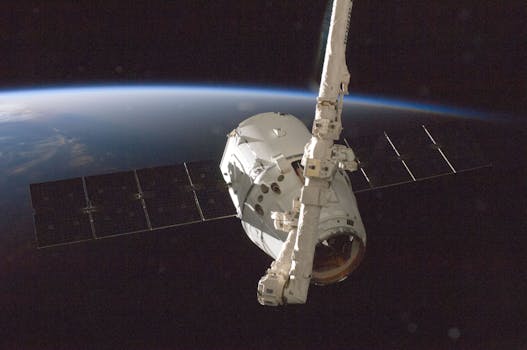
LEO Satellites: Revolutionizing Global Connectivity with WordPress
LEO satellites, or Low Earth Orbit satellites, are a type of satellite that orbits the Earth at an altitude of around 160 to 2,000 kilometers. These satellites have been gaining popularity in recent years due to their ability to provide high-speed, low-latency communication services. With the help of WordPress, LEO satellites are now being used to revolutionize global connectivity, providing internet access to remote and underserved communities around the world.
How LEO Satellites Work
LEO satellites work by orbiting the Earth in a low-altitude orbit, which allows them to provide high-speed communication services with minimal latency. They are able to do this because they are closer to the Earth’s surface than traditional geostationary satellites, which orbit at an altitude of around 36,000 kilometers. This proximity to the Earth’s surface allows LEO satellites to provide faster and more reliable communication services, making them ideal for applications such as satellite internet, voice communication, and data transfer.
Benefits of LEO Satellites
The benefits of LEO satellites are numerous. They provide high-speed, low-latency communication services, making them ideal for applications such as online gaming, video streaming, and virtual reality. They also provide global coverage, allowing them to reach remote and underserved communities around the world. Additionally, LEO satellites are more cost-effective than traditional satellites, making them a more viable option for companies and organizations looking to provide satellite-based services.
WordPress and LEO Satellites
WordPress is playing a critical role in the development and deployment of LEO satellites. Many companies and organizations are using WordPress to build websites and applications that utilize LEO satellite technology. For example, some companies are using WordPress to build satellite-based internet platforms that provide internet access to remote and underserved communities. Others are using WordPress to build applications that utilize LEO satellite technology for voice communication, data transfer, and other services.
Real-World Applications of LEO Satellites
LEO satellites have a wide range of real-world applications. They are being used to provide internet access to remote and underserved communities, to enable voice communication in areas with limited or no cellular coverage, and to transfer data between devices and systems. They are also being used for Earth observation, weather forecasting, and disaster response. For example, some companies are using LEO satellites to monitor crop health, track weather patterns, and respond to natural disasters.
Challenges and Limitations of LEO Satellites
While LEO satellites offer many benefits, they also have some challenges and limitations. One of the main challenges is interference from other satellites and devices, which can affect the quality of the signal. Another challenge is the limited lifespan of LEO satellites, which typically ranges from 5 to 10 years. Additionally, LEO satellites require a large number of satellites to provide global coverage, which can be costly and complex to deploy and maintain.
Conclusion
In conclusion, LEO satellites are revolutionizing global connectivity, providing high-speed, low-latency communication services to remote and underserved communities around the world. With the help of WordPress, LEO satellites are being used to build websites and applications that utilize satellite technology, providing internet access, voice communication, and data transfer services. While there are challenges and limitations to LEO satellites, they offer a promising solution for providing global connectivity and bridging the digital divide.





